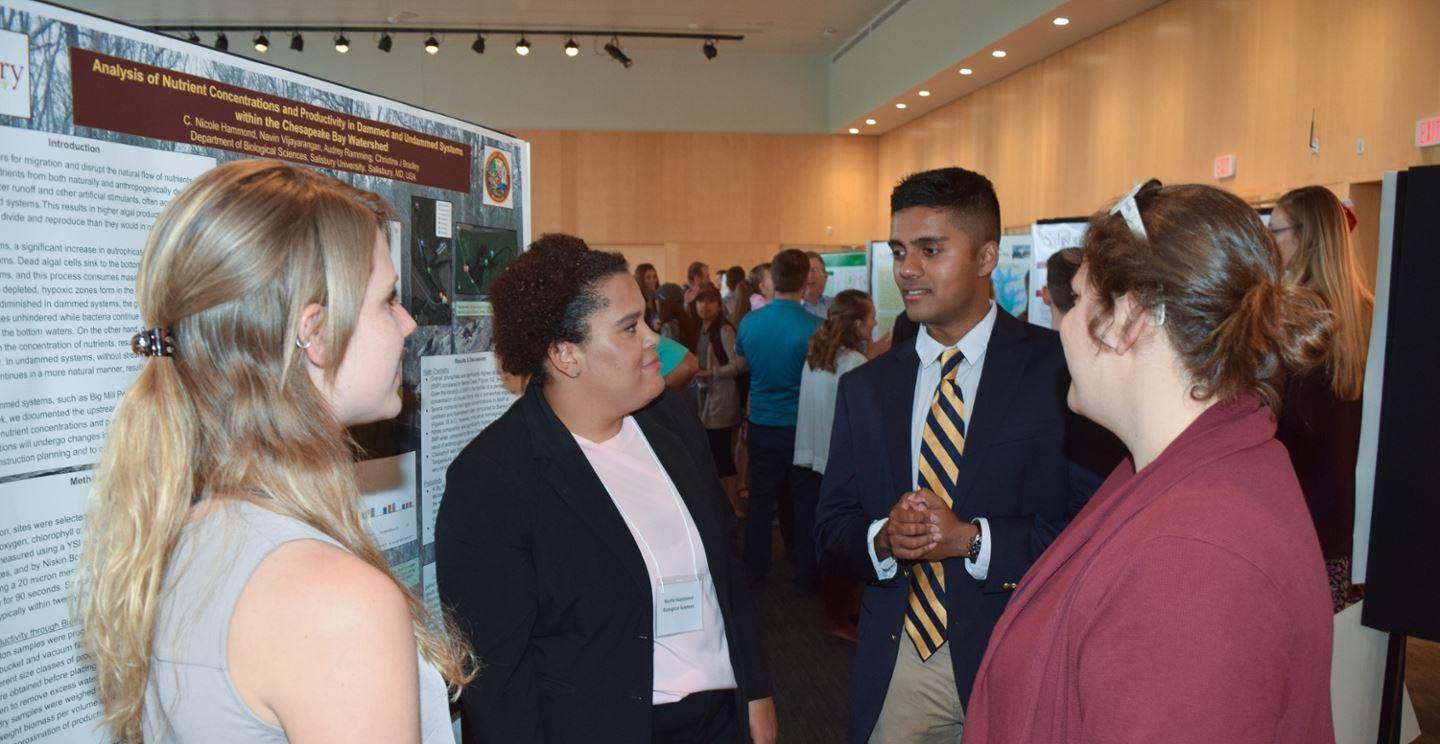

Environmental Studies
Our multidisciplinary Environmental Studies (ENVR) Department integrates courses in the humanities, social sciences, and natural sciences to give students the tools they need to examine complex environmental issues in depth and assess them from a variety of perspectives. The program combines a solid academic foundation with extensive experiential learning opportunities. Frequent opportunities for research and community engagement provide ENVR graduates with a substantial foundation for further graduate study or meaningful careers in environmental fields.
We are happy to help if you have any questions or need assistance! For departmental questions or questions about using the outdoor classroom, please contact Jaime Bunting, Program Specialist, at jrbunting@salisbury.edu or Dr. Tami Ransom, Department Chair, at tsransom@salisbury.edu.
-
 Environmental Studies Department Annual Report
Environmental Studies Department Annual Report
View the Report (PDF)
A Dynamic Environment
For the outdoor adventurer who loves marshes, rivers, forests, and barrier islands, there's no better-situated university on the east coast. Tucked between the Chesapeake Bay and the Atlantic Ocean, students can explore some of the mid-Atlantic’s most intact river systems, the Nanticoke and the Pocomoke; study coastal barrier islands such as Cedar and Assateague Islands; visit major wildlife refuges at Blackwater and Chincoteague; observe working watermen’s communities on Smith and Tangier Islands; and investigate close to a hundred thousand acres of regional wetlands.
Meet the Environmental Studies Department faculty and staff.
Our Academic Programs
ENVR offers a flexible and relevant mix of coursework and field opportunities—and, above all, the chance to cultivate what Rachel Carson termed “a sense of wonder so indestructible that it would last throughout life.”
Learn more about the programs offered by our department:
We start broadly. The syllabus begins: ‘[This course] is about learning how to live in a place without screwing it up.’ Which brings me to giving hope. To me, hope means envisioning, without resorting to science fiction, pathways to a Chesapeake about which we can someday feel optimistic. There’s plenty to teach there.
Getting Our Hands Dirty
ENVR majors gain valuable real-world experience through a wide variety of activities. Opportunities for study abroad abound: ENVR students can snorkel coral reefs in Honduras, investigate glacial landscapes in Iceland, or explore biodiversity in the Amazon. Some share meals with rural villagers in India, while others study sea turtles in Trinidad.
Closer to home, our students canoe remote Eastern Shore creeks, kayak to Smith Island in the Chesapeake Bay, whose culture boasts over 300 years of history and traditions harvesting local waters, and witness the mass spawning of horseshoe crabs along the Delaware Bay. They create pollinator gardens, build wildlife habitat sculptures, and investigate an ever-changing range of Chesapeake Bay topics with award-winning author Tom Horton. Green Floor Living-Learning Community students share common ENVR classes, develop environmentally-oriented activities, and perform green service projects. ENVR students intern in organizations as diverse as:
- Maryland Coastal Bays Program
- S. Geological Survey
- Chesapeake Bay Environmental Center
- Nanticoke Watershed Alliance
- Irvine Nature Center in Baltimore
- Maryland Department of the Environment
With these experiences as their background, six ENVR students have been awarded EPA Greater Research Opportunity Fellowships.
Student Information and Resources
-
6 EPA Graduate Research Opportunity Fellow
-
15 Fields of Study
-
40 National & Regional Internship Locations
